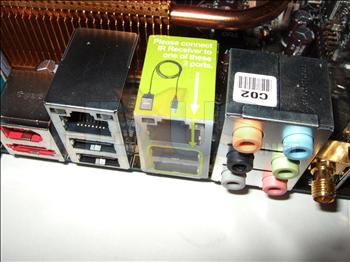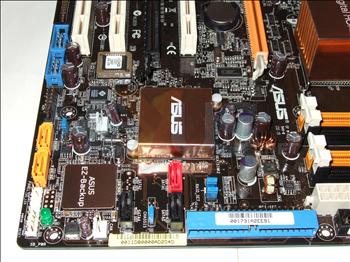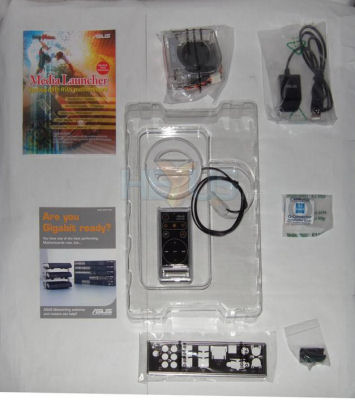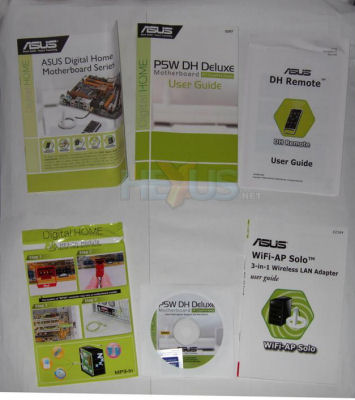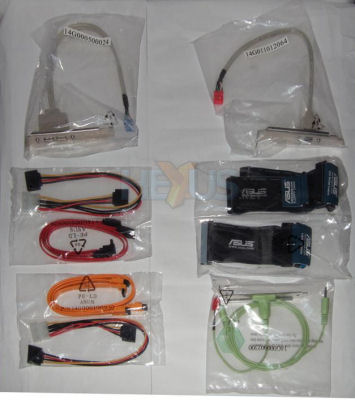Ports, features and bundle
Before we get the board evaluated with respect to benchmarks, we'll finish with a look at the ports and other features.
eSATA makes an appearance on the I/O section, allowing external hard drives to be connected on-the-fly. Say goodbye to slower USB transfers if you have an SATA drive housed in an external enclosure.
Legacy ports seem to be (thankfully) slowly dieing out. Only PS/2 ports and Serial make it onto this board. In their place ASUS adds an additional network port, FireWire400, a Wireless LAN daughter card, and digital audio out via optical and coaxial outputs. It's nice to see ASUS fitting its boards with new, innovative features rather than supporting rarely used legacy devices.
A sticker clearly shows which USB ports you are able to connect the included IR receiver to. It's important that it is directly connected to the port and doesn't go through any USB hubs beforehand, however.
At first the different SATA port colours can appear confusing but the colour scheme is there for a reason.
The ICH7R southbridge officially supports 4 SATA ports, yet only 3 are directly connected to it. The secret lies with the additional Silicon image controller. By using one of the ICH7R's SATA channels ports, it links directly into the southbridge for speedy transfers that aren't limited by riding on slower buses.
This is where ASUS's “EZ-Backup” magic happens. Simply connect 2 drives to the yellow headers and you have a RAID-1 or RAID-0 array. A set of jumpers allow the changing of the type of RAID that is used, with RAID-1 being default.
Software is included that allows monitoring of the drives under Windows.
The final two SATA ports are found at the rear of the board. One is already mounted on the PCB under the FireWire connector, whilst the other is standard SATA connector behind it. This allows 2 eSATA connections to be present through a back plate, if needed.
As well as the usual setup guides and rear I/O port bracket, ASUS has included a couple of worthwhile extras.
The first is for the Wireless LAN module built on the board. Not happy with providing a standard black, screw-in aerial, ASUS provides a custom-made circular antenna which has enough cable to be comfortably positioned for the best signal quality.
By having this feature directly on the board, another PCI slot or USB port is effectively freed up, which is always nice.
The second bit of goodness lies with the connector ASUS dubs the “Q-Connector”.
One of the most boring parts of a system setup is attaching the connectors which provide functionality to the case LEDs and power/reset switches. This becomes even more frustrating when you need to undertake some maintenance, making it necessary to remove and repeat the entire process again.
The Q-Connector provides a block which attaches to these pins. The headers that would normally be attached to the motherboard are then plugged into the Q-Connector. Once this is done, it's a simple matter of removing the Q-Connector as a block instead of each individual header.
It's such a simple but effective idea. We just hope that one day motherboard manufacturers collaborate and agree on a layout for these pins, so they don't change from board to board.
The included remote control is ideal for just skipping tracks and volume adjustment, but anything more than that and you're going to have to look at a fully fledged Media Centre replacement control. Not quite a digital home remote, we feel.
Being squarely aimed at the enthusiast market, the motherboard's bundle contains a fan that can attach to the passive heatsink fins behind the I/O port. This is especially important for people who prefer not to use air cooling. The reduced airflow over the heatsink, mixed with the boards 8-phase power regulation raises the possibility of heat-related failure.
A total of 6 manuals (the other 2 are included in the previous picture) ensure that every important feature of the board is covered. If this is your first system build, the sheer level of detail these manuals offer make them extremely useful.
There shouldn't be any reason to go cable-hunting – every feature that requires a cable has one included. A rather unusual one makes an appearance with this board, giving it the ability to support pass-through of other audio devices. Sounds like nothing new? Well, consider that it does it while it's powered down too!
Plugging an MP3 into a sound system that's connected to your PC just became a whole lot easier. No more fumbling around switching 3.5mm jacks anymore.

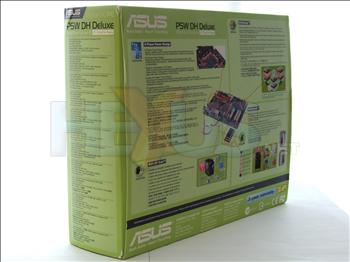
The packaging makes a noise about the features the board contains – and so it should. All too often manufacturers miss off critical information. While this isn't really an issue when buying online, it can make a difference at, say, a computer fair. After all, not many people are going to go through the hassle of flicking through the manual searching for that one elusive feature, are they?







